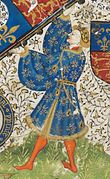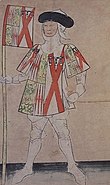
Edward IV was King of England from 4 March 1461 to 3 October 1470, then again from 11 April 1471 until his death in 1483. He was a central figure in the Wars of the Roses, a series of civil wars in England fought between the Yorkist and Lancastrian factions between 1455 and 1487.

Richard Neville, 16th Earl of Warwick, 6th Earl of Salisbury, known as Warwick the Kingmaker, was an English nobleman, administrator, landowner of the House of Neville fortune and military commander. The eldest son of Richard Neville, 5th Earl of Salisbury, he became Earl of Warwick through marriage, and was the wealthiest and most powerful English peer of his age, with political connections that went beyond the country's borders. One of the leaders in the Wars of the Roses, originally on the Yorkist side but later switching to the Lancastrian side, he was instrumental in the deposition of two kings, which led to his epithet of "Kingmaker".
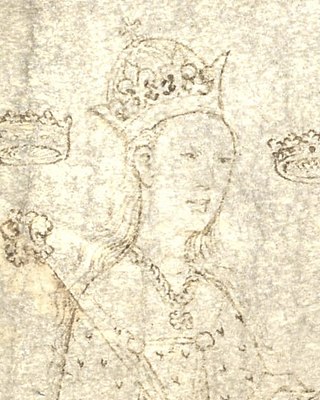
Anne Neville was Queen of England as the wife of King Richard III. She was the younger of the two daughters and co-heiresses of Richard Neville, 16th Earl of Warwick. Before her marriage to Richard, she had been Princess of Wales as the wife of Edward of Westminster, Prince of Wales, the only son and heir apparent of King Henry VI.

The Battle of Wakefield took place in Sandal Magna near Wakefield in northern England, on 30 December 1460. It was a major battle of the Wars of the Roses. The opposing forces were an army led by nobles loyal to the captive King Henry VI of the House of Lancaster and his Queen Margaret of Anjou on one side, and the army of Richard, Duke of York, the rival claimant to the throne, on the other.

The Battle of Towton took place on 29 March 1461 during the Wars of the Roses, near Towton in North Yorkshire, and "has the dubious distinction of being probably the largest and bloodiest battle on English soil". Fought for ten hours between an estimated 50,000 soldiers in a snowstorm on Palm Sunday, the Yorkist army achieved a decisive victory over their Lancastrian opponents. As a result, Edward IV deposed the Lancastrian Henry VI and secured the English throne.

Richard of York, 3rd Duke of York, also named Richard Plantagenet, was a leading English magnate and claimant to the throne during the Wars of the Roses. He was a member of the ruling House of Plantagenet by virtue of being a direct male-line descendant of Edmund of Langley, King Edward III's fourth surviving son. However, it was through his mother, Anne Mortimer, a descendant of Edward III's second surviving son, Lionel of Antwerp, that Richard inherited his strongest claim to the throne, as the opposing House of Lancaster was descended from John of Gaunt, Duke of Lancaster, the third surviving son of Edward III. He also inherited vast estates and served in various offices of state in Ireland, France and England, a country he ultimately governed as Lord Protector due to the mental instability of King Henry VI.
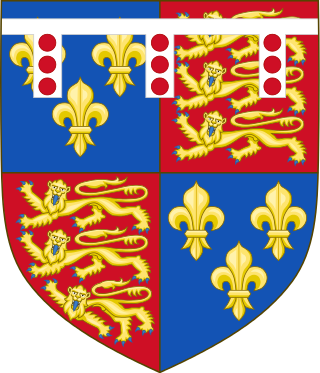
The House of York was a cadet branch of the English royal House of Plantagenet. Three of its members became kings of England in the late 15th century. The House of York descended in the male line from Edmund of Langley, 1st Duke of York, the fourth surviving son of Edward III. In time, it also represented Edward III's senior line, when an heir of York married the heiress-descendant of Lionel, Duke of Clarence, Edward III's second surviving son. It is based on these descents that they claimed the English crown. Compared with its rival, the House of Lancaster, it had a superior claim to the throne of England according to cognatic primogeniture, but an inferior claim according to agnatic primogeniture. The reign of this dynasty ended with the death of Richard III of England at the Battle of Bosworth Field in 1485. It became extinct in the male line with the death of Edward Plantagenet, 17th Earl of Warwick, in 1499.

Cecily Neville was an English noblewoman, the wife of Richard, Duke of York (1411–1460), and the mother of two kings of England—Edward IV and Richard III. Cecily Neville was known as "the Rose of Raby", because she was born at Raby Castle in Durham, and "Proud Cis", because of her pride and a temper that went with it, although she was also known for her piety. She herself signed her name "Cecylle".
John Neville, 1st Marquess of Montagu was a major magnate of fifteenth-century England. He was a younger son of Richard Neville, 5th Earl of Salisbury, and the younger brother of Richard Neville, Earl of Warwick, the "Kingmaker".
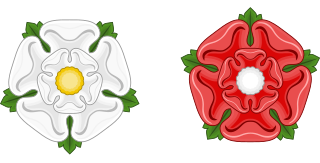
The Battle of Northampton was fought on 10 July 1460 near the River Nene, Northamptonshire. It was a major battle of the Wars of the Roses. The opposing forces were an army led by nobles loyal to King Henry VI of the House of Lancaster, his Queen Margaret of Anjou and their six-year-old son Edward, Prince of Wales, on one side, and the army of Edward, Earl of March, and Warwick the Kingmaker on the other. The battle was the first in which artillery was used in England.
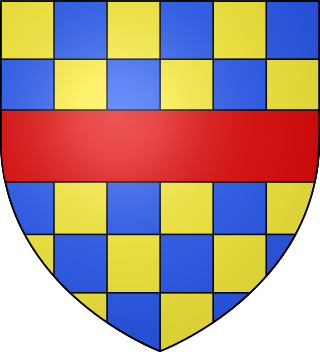
John Clifford, 9th Baron Clifford, 9th Lord of Skipton was a Lancastrian military leader during the Wars of the Roses in England. The Clifford family was one of the most prominent families among the northern English nobility of the fifteenth century, and by the marriages of his sisters, John Clifford had links to some very important families of the time, including the earls of Devon. He was orphaned at twenty years of age when his father was slain by partisans of the House of York at the first battle of the Wars of the Roses, the Battle of St Albans in 1455. It was probably as a result of his father's death there that Clifford became one of the strongest supporters of Margaret of Anjou, wife of King Henry VI, who ended up as effective leader of the Lancastrian faction.
John Neville, Baron Neville was an English nobleman who fought for the House of Lancaster during the Wars of the Roses. He belonged to a senior but impoverished branch of the Neville family of northern England, which had earlier been disinherited in favour of a younger branch headed by John's half–uncle, Richard, Earl of Salisbury. John Neville and his brothers spent several years feuding with Salisbury over the contested inheritance and, when the dynastic wars broke out, John sided with the Lancastrians whilst the junior Nevilles sided with the House of York.
Events from the 1460s in England.
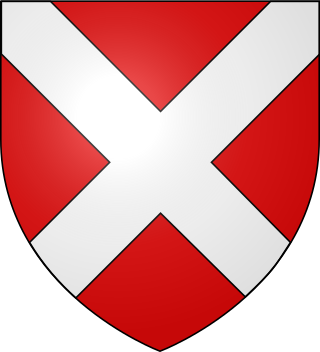
The Neville or Nevill family is a noble house of early medieval origin, which was a leading force in English politics in the Late Middle Ages. The family became one of the two major powers in northern England and played a central role in the Wars of the Roses along with their rival, the House of Percy.
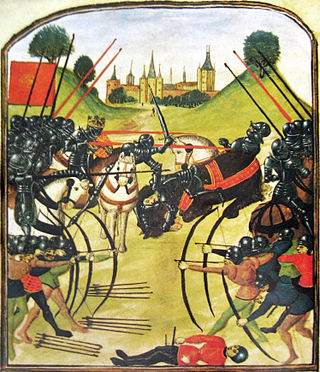
The Wars of the Roses, known at the time and in following centuries as the Civil Wars, were a series of civil wars fought over control of the English throne from 1455 to 1487. The wars were fought between supporters of the House of Lancaster and House of York, two rival cadet branches of the royal House of Plantagenet. The conflict resulted in the end of Lancaster's male line in 1471, enabling the Tudor family to inherit their claim to the throne through the female line. Conflict was largely brought to an end upon the union of the two houses through marriage, creating the Tudor dynasty that would subsequently rule England.

The First Battle of St Albans took place on 22 May, 1455, at St Albans, 22 miles (35 km) north of London, and traditionally marks the beginning of the Wars of the Roses in England. Richard, Duke of York, and his allies, the Neville Earls of Salisbury and Warwick, defeated a royal army commanded by Edmund Beaufort, Duke of Somerset. Unusually, the battle was contested in the town of St Albans itself, with the bulk of the fighting taking place in the streets and a tavern being used as a redoubt. Somerset was killed in the battle, and King Henry VI captured, clearing the way for a subsequent parliament to appoint Richard of York Lord Protector.

The Second Battle of St Albans was fought on 17 February 1461 during the Wars of the Roses in St Albans, Hertfordshire, England.
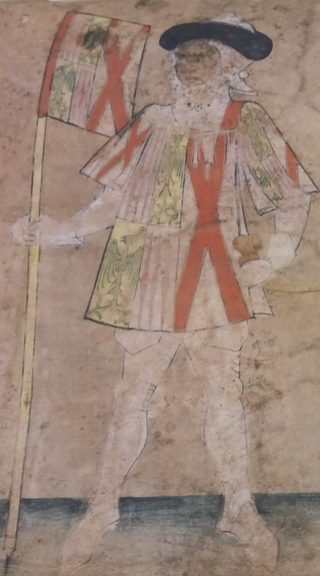
Sir Thomas Neville was the second son of Richard Neville, 5th Earl of Salisbury, a major nobleman and magnate in the north of England during the fifteenth-century Wars of the Roses. Sir Thomas was a younger brother to the more famous Richard Neville, Earl of Warwick, the 'Kingmaker'. Thomas worked closely with them both in administering the region for the Crown and became a leading player in the turbulent regional politics of northern England in the early 1450s, especially in the Neville family's growing local rivalry with the House of Percy. In the armed feud between both houses, which broke out in 1453 and lasted two years, Thomas and his brother John launched a series of raids, ambushes and skirmishes across Yorkshire against the Percy family. Historians describe the feud as setting the stage for the Wars of the Roses, the dynastic struggle between the houses of Lancaster and York for the English throne, and Thomas played a large role in the Neville family's alliance with his uncle, Richard, Duke of York.

The Loveday of 1458 was a ritualistic reconciliation between warring factions of the English nobility that took place at St Paul's Cathedral on 25 March 1458. Following the outbreak of the Wars of the Roses in 1455, it was the culmination of lengthy negotiations initiated by King Henry VI to resolve the lords' rivalries. English politics had become increasingly factional during his reign, and was exacerbated in 1453 when he became catatonic. This effectively left the government leaderless, and eventually the King's cousin, and at the time heir to the throne, Richard, Duke of York, was appointed Protector during the King's illness. Alongside York were his allies from the politically and militarily powerful Neville family, led by Richard, Earl of Salisbury, and his eldest son, Richard, Earl of Warwick. When the King returned to health a year later, the protectorship ended but partisanship within the government did not.

The siege of the Tower of London was an episode of the Wars of the Roses, in which adherents of the rival Plantagenet houses of Lancaster and York were pitted against each other. In June 1460, several Yorkist nobles, who had unsuccessfully rebelled against King Henry VI the year before and had fled to Calais, invaded the south east of England at Sandwich. They enjoyed widespread support through popular discontent with the ruling court among the populace of Kent and the merchants of London, and were greeted by enthusiastic crowds when they entered London on 2 July.



